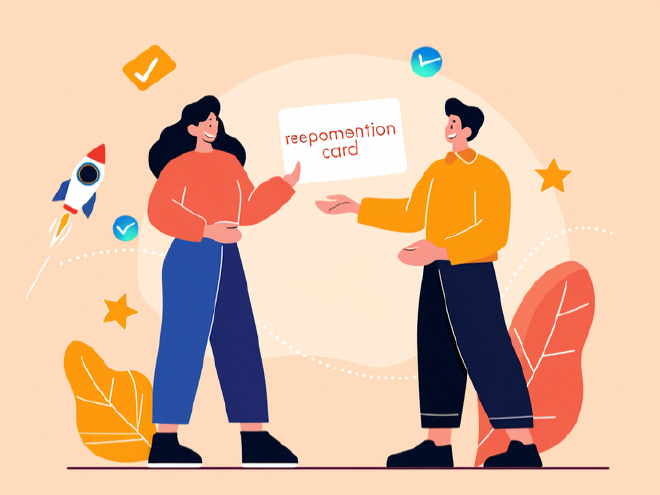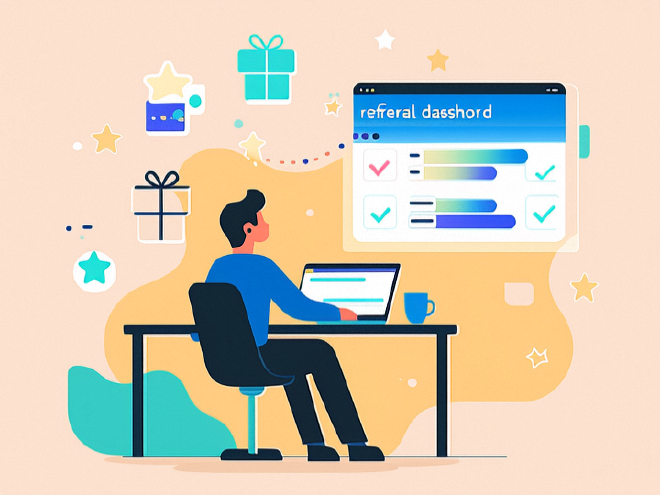How to Optimize Your Freelance or Agency Business Through 'Client Referrals'
Table of Contents
How to Optimize Your Freelance or Agency Business Through “Client Referrals” #
Introduction: Why Freelancers and Agencies Need Client Referrals More Than Ever #

Have you noticed that the most “valuable” clients often aren’t those you actively pursued—instead, they’re introduced by someone else? That’s right: client referrals act like a sales channel equipped with an “inherent trust filter.” Not only do they save you significant marketing costs, but they also dramatically boost your conversion rates. After all, why would anyone easily doubt a recommendation from a friend or colleague?
For freelancers and agencies, client referrals are even more of a game-changing tool. In today’s fiercely competitive market, how can you turn your existing clients into your “brand ambassadors”? This article will guide you step-by-step through three key areas: building trust, optimizing the customer experience, and designing a referral process—all aimed at creating a replicable, sustainable, and scalable referral system.
Part 1: Trust Is the Foundation of Referrals—You Must First Be “Worthy of Being Recommended” #
Referrals aren’t something you ask for—they’re earned.
If your service delivery is mediocre, even if your clients are satisfied, they won’t proactively go out of their way to introduce you to new prospects. Therefore, the first step is making sure your clients feel that recommending you is something they’d be proud of.
How to Build Trust and Make Yourself “Referrable”? #
- Deliver Results That Exceed Expectations: It’s not enough to “just get it done”—you need to create work that truly impresses your clients.
- Communicate Clearly and Transparently: Clients aren’t afraid of mistakes; they’re concerned when you withhold the truth.
- Maintain a Professional Image: From email formats and communication tone to deliverables, everything should reflect your professionalism.
- Showcase Success Stories: Let your clients see firsthand how you’ve helped others solve similar problems.
Pro Tip: Regularly send “project progress update” emails—not only to keep your clients informed but also to subtly plant the seeds for future referrals.
Part 2: Experience Is the Catalyst for Referrals—Make Clients Want to Share #
Customer experience isn’t just about “good service”—it’s about crafting a seamless journey from initial contact through project completion and beyond. Every touchpoint along the way has the potential to spark a referral.
A Checklist for Optimizing the Customer Experience #
✅ Project Kickoff Phase: Clearly define goals, timelines, and deliverables upfront to avoid any “information gaps.”
✅ Execution Phase: Provide timely feedback and proactive communication, ensuring clients never have to wonder what you’re working on.
✅ Delivery Phase: Go above and beyond by delivering results that exceed expectations—and follow up with a detailed “project summary report” to show your attention to detail.
✅ Post-Project Follow-Up: Send a heartfelt thank-you note along with a promise of ongoing support, letting clients know you’re committed to maintaining the relationship long after the project ends.
Case Study: A Freelance Designer’s Referral Strategy #
Linda is a UI/UX designer who takes her post-project approach to the next level. After completing a project, she sends a customized “results showcase email” that includes not only the design deliverables but also her insights into the client’s business, actionable optimization suggestions, and a link to her exclusive “referral rewards program.”
The result? Over the past year, more than 30% of Linda’s new clients came through referrals—and these clients tend to stay longer and express higher satisfaction levels compared to those acquired through other channels.
Part 3: Design a Referral Process That Makes Recommendations Feel Natural #

Client referrals aren’t left to chance—they’re the result of thoughtful, well-designed processes. To encourage referrals, you need a systematic, replicable, and easy-to-follow referral workflow that makes it effortless for clients to recommend you, shows them exactly how to do it, and ensures they feel rewarded afterward.
Three Key Elements of a Successful Referral Process #
- Incentive Mechanism: While material rewards aren’t always necessary, offering some form of “recognition” or “benefit” can make the process more appealing.
- Clear Referral Entry Point: Ensure clients know exactly how to refer you—whether it’s through a simple link, a dedicated form, or a straightforward call-to-action.
- Follow-Up Communication: Once a client refers you, acknowledge their effort promptly and express gratitude for their support.
Optional Referral Incentive Strategies #
| Type | Description | Example |
|---|---|---|
| Material Rewards | Offer commissions or discounts upon successful referrals | Refer a client, and receive a 10% discount on your next project |
| Exclusive Benefits | Provide access to premium resources or priority services | Prioritize projects referred by your clients |
| Social Recognition | Publicly acknowledge or highlight referrers | Thank referrers prominently on your website or in email communications |
| Mutual Collaboration | Encourage reciprocal referrals | You introduce me to a client, and I’ll help you connect with one of your peers |
Quick Tip: If you’re running an agency, consider drafting a “referral agreement” and including a referral clause directly in your project contracts—for example, “Referred clients will enjoy priority scheduling privileges.”
Part 4: Practical Tools to Streamline Your Referral Process #
1. Referral Email Template (Ideal for Freelancers) #
Subject: Thank You for Choosing Me—Refer a Friend and Enjoy Exclusive Benefits!
Hi [Client Name],
Thank you for partnering with me on this project! I’m thrilled to have delivered [service details] and hope it brought real value to your business.
If you know anyone else who could benefit from [service type], I’d love for you to refer them to me! For every successful referral that leads to a new client partnership, you’ll earn:
👉 [Reward Details, e.g., 10% off your next service / an exclusive resource pack / priority access]
All you need to do is introduce them to me—or simply let them mention your name when reaching out, and I’ll know it was your referral!
Once again, thank you for your trust and support. Looking forward to our continued collaboration!
Best regards,
[Your Name]
[Contact Information / Website Link]
2. Referral Tracking Tools (Perfect for Agencies) #
- ReferralCandy: Great for e-commerce businesses and SaaS companies, offering automated referral tracking capabilities.
- AffiliateWP: A WordPress plugin designed specifically for content creators and small agencies.
- Google Sheets + Custom Forms: A low-cost solution ideal for freelancers looking to get started quickly.
Part 5: Real-Life Success Stories—How Client Referrals Drive Business Growth #
Case Study 1: Copywriter Freelancer Emily #
Emily is a freelance copywriter specializing in brand messaging. She implemented a unique “refer-a-friend-and-get-free-brand-copy-optimization” incentive: for every client she referred who ended up signing a contract, she offered the referrer free access to a comprehensive brand copy optimization service.
The result? Within three months, Emily secured eight new clients through referrals—and three of those clients came directly from the same referrer, creating a powerful “referral loop.”
Case Study 2: Digital Marketing Agency MarketMate #
MarketMate developed a tailored “referral package” for each of its clients, complete with detailed instructions on how to refer others, a clear outline of referral rewards, and a unique referral link. Additionally, they sent a personalized “thank-you + referral invitation” email at the end of each project and set up a dedicated dashboard to track referrals.
The outcome? MarketMate saw a 25% increase in referral conversion rates, and their referred clients enjoyed an average lifetime value 40% higher than non-referral clients.
Conclusion: Turn Your Clients Into Your “Brand Ambassadors” #
Client referrals aren’t a one-time event—they’re part of an ongoing strategy for nurturing client relationships. When you treat your